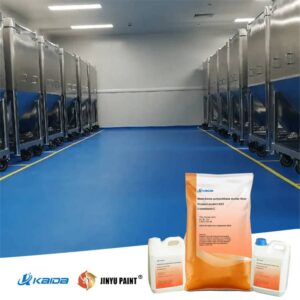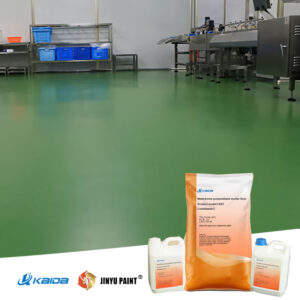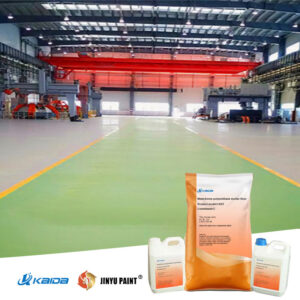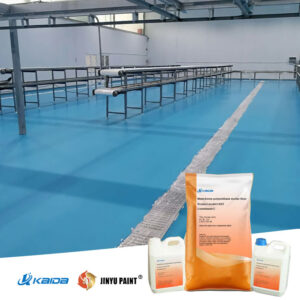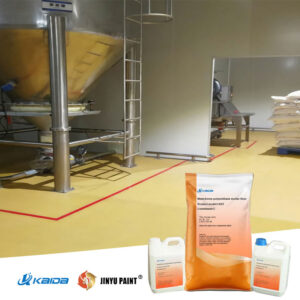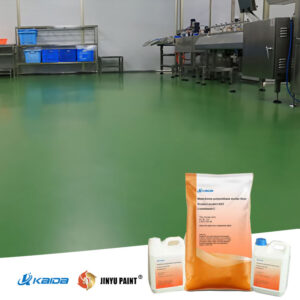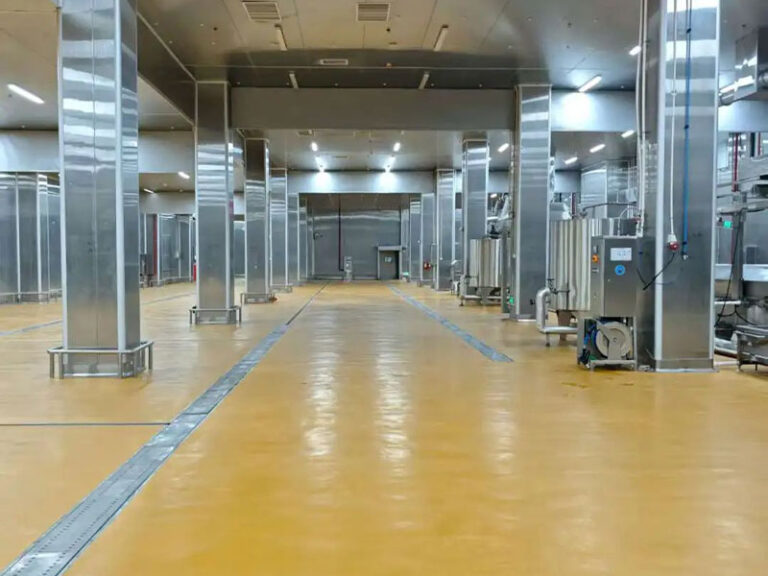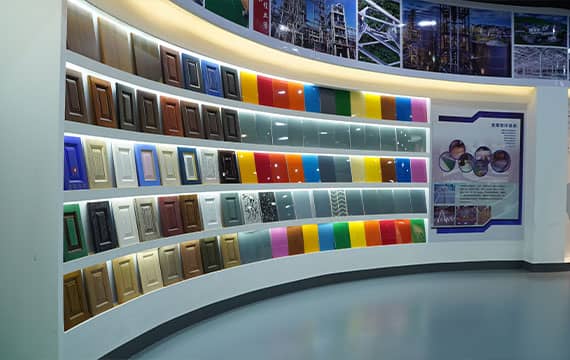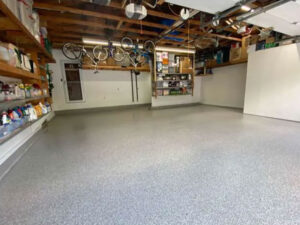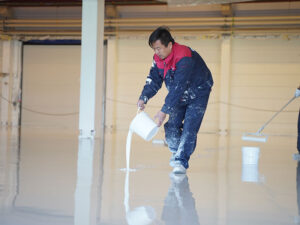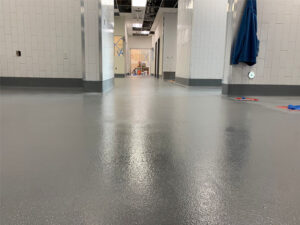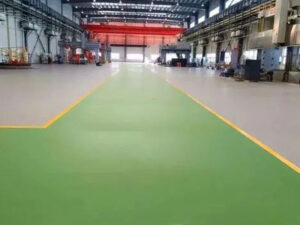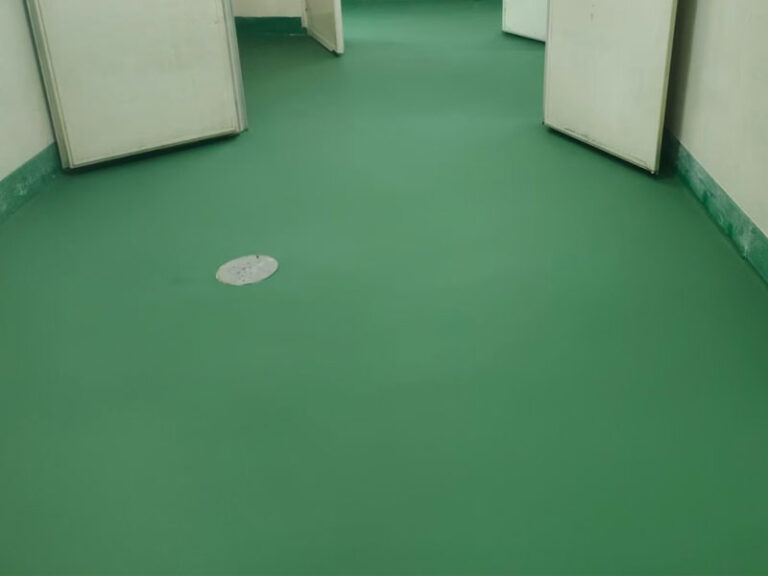
طلاء الأرضيات من البولي يوريثين من جينيو للدهانات
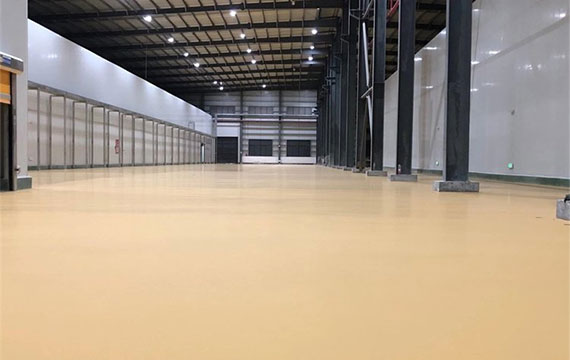
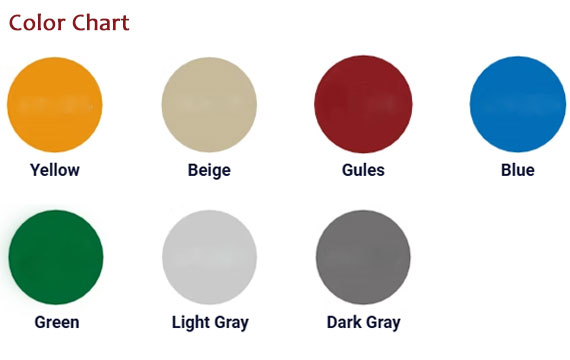
JINYU PAINT® POLYURETHANE FLOORING PRODUCTS
عرض 11 من كل النتائج
-

دهان أرضيات خرسانية من البولي يوريثين مضاد للانزلاق ذاتي التسوية ومضاد للتآكل وحامل للأحمال
قراءة المزيد -

نظام الأرضيات ذاتية التسوية من البولي يوريثين البولي يوريثان من JINYU PAINT® MF
قراءة المزيد -

طبقة طلاء علوي من البولي يوريثان JINYU® DT المقاوم للتآكل
قراءة المزيد -

طلاء الأرضيات من اليوريثان شديد التحمل JINYU® HD
قراءة المزيد -

طلاء البولي يوريثان JINYU® MF 4-6 مم للأرضيات الخرسانية
قراءة المزيد -

طلاء أرضيات اليوريثان ذاتي التسوية الذاتية من JINYU® SL بطبقة نهائية شبه لامعة
قراءة المزيد -

طلاء أرضيات خرسانية من البولي يوريثين من جينيو® UD 9-12 مم شديد التحمل ومضاد للانزلاق
قراءة المزيد -

طبقة نهائية من البولي يوريثين PU3600 فائقة المقاومة للتآكل
قراءة المزيد -

طلاء الأرضيات الخرسانية المصنوعة من البولي يوريثين المضاد للتآكل ذاتي التسوية
قراءة المزيد -

دهانات البولي يوريثان المائية الشفافة عالية اللمعان WPU100
قراءة المزيد -

دهان الأرضيات من البولي يوريثين المائي WPU100
قراءة المزيد
Advantages of Polyurethane Floor Coatings (Pu Flooring)
Polyurethane (urethane) floor coatings are a high-performance flooring solution widely used in industrial, commercial, and residential applications due to their superior durability, flexibility, and aesthetic appeal.
1. مقاومة التآكل الاستثنائية
- الالتصاق العالي إلى ركائز مختلفة (خرسانة، إيبوكسي، بلاط، إلخ)
- متينة ميكانيكياً-مقاومة للتآكل والصدمات والأحمال الثقيلة
- أداء تم اختباره: يتحمل سقوط الكرة الفولاذية بوزن 500 جرام من على ارتفاع 100 سم دون أن تتشقق أو تتقشر
- مقاومة المواد الكيميائية والتآكل-مثالي للمصانع والمستودعات والمصانع الكيميائية
2. تخصيص ممتاز (تعدد الاستخدامات)
- مجموعة واسعة من الألوان-قابلة للتخصيص لتتناسب مع العلامة التجارية أو احتياجات التصميم
- سُمك قابل للتعديل (طبقات تزيينية رقيقة أو طبقات سميكة من الدرجة الصناعية)
- الخيارات الوظيفية: مضاد للكهرباء الساكنة ومضاد للانزلاق ومثبط للهب وموصل، إلخ.
3. قابلية التهوية (التحكم في الرطوبة)
- تسمح طلاءات البولي يوريثان ذات الأساس مائي بانتقال البخار-يمنع تكون الفقاعات والتفكك
- يحجب الرطوبة الخارجية-مثالي للبيئات الرطبة (نباتات الطعام، والطوابق السفلية، وأحواض السباحة)
4. تركيب سريع وسهل
- قابل للتخفيف من الماء-سهولة الاستخدام والتنظيف
- المعالجة السريعة: يمكن السير عليها خلال 24 ساعة، ويمكن تحميلها بالكامل خلال 7 أيام
- منخفضة المركبات العضوية المتطايرة وصديقة للبيئة-يتوافق مع معايير المباني الخضراء
5. لمسة نهائية جمالية وسلسة
- خيارات لامع/غير لامع/شبه لامع-يعزز الجاذبية البصرية
- سلس وغير مسامي-يمنع تراكم الغبار (مثالي للمستشفيات والمعامل)
- ألوان مقاومة للأشعة فوق البنفسجية-لا يتلاشى بمرور الوقت
6. Easy Maintenance & Repair<
- سطح أملس-سهل التنظيف (الماء والمنظفات الخفيفة)
- قابل للإصلاح-إصلاحات موضعية بدون إعادة طلاء كاملة
- مقاوم للبقع والمواد الكيميائية-تخفيض التكاليف على المدى الطويل
7. عمر افتراضي طويل ومتانة فائقة
- أكثر من 20 عاماً من العمر التشغيلي-الإيبوكسي والخرسانة التقليدية التي تدوم طويلاً
- يتحمل -60 درجة مئوية إلى 120 درجة مئوية-مثالي للمجمدات ومصانع الأغذية والاستخدام الخارجي
- يقوي الأرضيات الخرسانية-يمنع التشقق والغبار
Polyurethane Flooring Industrial Application
Epoxy or Polyurethane?
Polyurethane flooring stands as a superior alternative to epoxy in many demanding industrial environments, offering enhanced flexibility, better UV stability, and improved resistance to thermal shock and abrasion. While epoxy coatings provide excellent adhesion and chemical resistance, polyurethane surpasses in environments requiring greater elasticity and weatherability. Key application scenarios include:
- Warehouses and Logistics Centers
Unlike epoxy, polyurethane maintains flexibility under heavy impact, preventing cracking and chipping from continuous forklift traffic. Its superior abrasion resistance ensures longer service life in high-traffic areas. - Food and Beverage Processing Plants
Polyurethane offers better thermal shock resistance than epoxy during frequent hot washdowns, preventing blistering or peeling. It also provides higher slip resistance in wet conditions. - Pharmaceutical and Cleanroom Facilities
While both offer seamless surfaces, polyurethane exhibits better resistance to repeated chemical exposure and maintains its appearance without yellowing or degrading under UV sterilisation lights. - Automotive and Aerospace Facilities
Compared to epoxy, polyurethane demonstrates higher resistance to jet fuels, hydraulic fluids, and extreme temperatures without softening or becoming brittle. - Manufacturing and Assembly Plants
Polyurethane flooring outperforms epoxy in environments with significant temperature variations due to its superior thermal cycling capability and reduced sensitivity to moisture during installation. - Cold Storage and Freezer Rooms
Unlike epoxy, which can become brittle and crack in sub-zero conditions, polyurethane retains its flexibility and impact resistance, ensuring durability in freezing environments.Polyurethane flooring combines advanced mechanical strength with chemical and environmental resistance, making it a more durable and adaptable choice than epoxy for modern industrial facilities facing dynamic operational conditions.
الأنواع الشائعة لطلاء الأرضيات من البولي يوريثين (PU)
Polyurethane floor coatings are highly versatile and can be customized for various applications. Below are the most common classifications, along with theirkey features and uses
① طلاء أرضيات من البولي يوريثين المائي اللامع/غير اللامع
- الأنواع: لمسات نهائية شديدة اللمعان وغير لامعة وشبه لامعة
- التطبيقات: الأرضيات الصناعية والمستشفيات وعربات مترو الأنفاق والمكتبات والأماكن التجارية
- المزايا: يقلل من الحاجة إلى إزالة الشعر بالشمع/التلميع مع الحفاظ على لمعان يدوم طويلاً
② طلاء أرضيات من البولي يوريثين فائق المقاومة للتآكل
- الميزات: كثافة عالية وصلابة شديدة ومقاومة للخدش والتآكل
- التطبيقات: محلات الماكينات، ومرائب السيارات، والملاعب الرياضية، والمستودعات
- المزايا: يتحمل الآلات الثقيلة، والرافعات الشوكية، وحركة السير على الأقدام العالية
③ طلاء الأرضيات من البولي يوريثين سريع الجفاف
- الأنواع: المعالجة السريعة بدرجة حرارة منخفضة، المعالجة السريعة بدرجة حرارة الغرفة
- التطبيقات: الإنشاءات الشتوية، والإصلاحات السريعة، ووضع العلامات على الخطوط
- المزايا: يقلل من وقت التوقف عن العمل، وهو مثالي للمشاريع الحساسة للوقت
④ طلاء الأرضيات المزخرف من البولي يوريثين
- الميزات: ألوان نابضة بالحياة، وخيارات قشور/كوارتز زخرفية، وجماليات عالية
- التطبيقات: المستشفيات، والمدارس، ومراكز التسوق، والمكاتب
- المزايا: تجمع بين الجمال + المتانة، سهلة التنظيف
⑤ طلاء أرضيات من البولي يوريثان عالي/منخفض الحرارة المقاوم للحرارة العالية
- الأداء: مستقر من -40 درجة مئوية إلى 120 درجة مئوية
- التطبيقات: مصانع تجهيز الأغذية، والتخزين البارد، والمجمدات
- المزايا: لا تتشقق في درجات الحرارة القصوى، متوافقة مع إدارة الغذاء والدواء الأمريكية
⑥ أرضيات البولي يوريثين للرياضة والملاعب
- الميزات: امتصاص ممتاز للصدمات وتقليل الضوضاء والمرونة
- التطبيقات: ملاعب التنس، ومسارات الجري، وأرضيات الصالة الرياضية
- المزايا: يقلل من الإجهاد، مقاوم للانزلاق، مقاوم للأشعة فوق البنفسجية
⑦ طلاء البولي يوريثان (طلاء الطرق البلدية والمنتزهات (رصيف ملون مضاد للانزلاق)
- الميزات: خالي من المذيباتمقاومة للانزلاق، مقاومة للانزلاق، ومخفضة للضوضاء، وألوان نابضة بالحياة
- التطبيقات: الحدائق والممرات والساحات العامة ومواقف السيارات الخارجية
- المزايا: مقاوم للعوامل الجوية، احتفاظ بالألوان يدوم طويلاً
⑧ طلاء البولي يوريثان المقاوم للعوامل الجوية للحمامات الخارجية وأحواض السباحة
- الميزات: مقاومة للأشعة فوق البنفسجية، مقاومة للماء، مقاومة للمواد الكيميائية (الكلور/المياه المالحة)
- التطبيقات: أماكن الجلوس في الملاعب، وحمامات السباحة، والحدائق المائية
- المزايا: لا يتلاشى، التصاق قوي، مضاد للعفن
Frequently Asked Questions (FAQ):
Q1: What is the main difference between epoxy and polyurethane floor coatings?
This is one of the most searched questions globally.
A: While both are high-performance coatings, they serve different primary functions. Epoxy coatings are renowned for their exceptional adhesion, durability, and load-bearing strength, making them an ideal base coat. Polyurethane coatings are prized for their superior UV stability, chemical resistance, and abrasion resistance. They are also more flexible and provide a smoother, often glossier, finish. The best systems often combine both: an epoxy base coat for strength and a polyurethane top coat for protection and aesthetics.
Q2: Are polyurethane floors resistant to chemicals and stains?
Search terms: “chemical resistant floor coating,” “acid proof floor.”
A: Yes, excellent resistance is a key reason for their popularity. Polyurethane coatings form a non-porous, seamless surface that is highly resistant to a wide range of chemicals, including oils, greases, fuels, solvents, and many acids and alkalis. This makes them a top choice for food and beverage plants, automotive garages, laboratories, and pharmaceutical facilities where spills are common.
Q3: Will a polyurethane coating yellow or fade in direct sunlight?
Search terms: “UV resistant garage floor,” “yellowing floor coating.”
A: Unlike standard epoxy, which can chalk and yellow under UV exposure, aliphatic polyurethane coatings are specifically formulated with superior UV stability. They are designed to maintain their color and gloss for years, even under direct sunlight. This makes them perfect for aircraft hangars, warehouses with skylights, and patios or outdoor balconies.
Q4: How long does a polyurethane floor coating last?
Search terms: “polyurethane floor lifespan,” “how long does garage floor coating last.”
A: The lifespan depends heavily on surface preparation, installation quality, and traffic levels. A professionally applied polyurethane top coat over an epoxy system can last 10-20 years in industrial or commercial settings. In high-traffic areas like warehouses, it may require a refresher coat every 5-10 years. Proper maintenance is crucial for maximizing its life.
Q5: Is a polyurethane floor slippery? Is it slip-resistant?
Search terms: “non-slip garage floor,” “slip resistant industrial flooring.”
A: A standard glossy polyurethane finish can be slippery when wet. However, anti-slip additives (such as polymer grit or quartz sand) can be easily broadcast into the wet coating to create a textured, slip-resistant surface. This is a critical safety feature for areas like commercial kitchens, pool decks, and manufacturing plants.
Q6: Can I apply polyurethane coating myself, or do I need a professional?
Search terms: “DIY polyurethane floor kit,” “professional floor coating.”
A: While DIY kits are available, achieving a durable, professional-grade result is extremely challenging. Proper application requires ** meticulous surface preparation (often including diamond grinding), strict humidity and temperature control, and expert mixing and application techniques**. For any commercial, industrial, or garage application, we highly recommend hiring a certified professional installer.
Q7: What is the typical curing and downtime for a polyurethane floor?
Search terms: “floor coating cure time,” “how long before I can drive on garage floor.”
A: Polyurethane coatings are typically touch-dry in 4-8 hours. Light foot traffic is usually possible in 12-24 hours. However, full curing (achieving maximum chemical and mechanical properties) can take 3-7 days. It’s generally recommended to wait at least 72 hours before moving heavy equipment or parking vehicles on the surface. Always follow the manufacturer’s specific guidelines.
Q8: Can polyurethane be applied over an existing epoxy floor?
Search terms: “recoat old epoxy floor,” “polyurethane top coat.”
A: Absolutely. This is a very common and highly recommended practice to rejuvenate an old, worn, or yellowed epoxy floor. The existing epoxy must be properly cleaned, lightly abraded (e.g., shot-blasted or diamond-ground), and degreased to ensure strong adhesion for the new polyurethane top coat.
Q9: What maintenance is required for a polyurethane floor?
Search terms: “how to clean polyurethane floor,” “industrial floor maintenance.”
A: Maintenance is simple. Regular sweeping or dust mopping removes abrasive debris. For cleaning, use a neutral pH cleaner and a soft-bristle brush or auto-scrubber. Avoid harsh acidic or alkaline cleaners, as they can degrade the surface over time despite its high resistance. Immediately wiping up spills is always recommended.
Q10: What types of environments are polyurethane coatings best suited for?
Search terms: “best coating for food factory floor,” “garage floor coating for cold climate.”
A: Due to their combination of properties, polyurethane coatings are the preferred choice for:
- Food & Beverage Processing: USDA and FDA compliant, easy to clean, chemical resistant.
- Automotive & Aerospace: Resistant to hydraulic fluids, jet fuel, and hot tire pick-up.
- Warehouses & Logistics: Withstand heavy foot and forklift traffic without wearing down.
- Commercial & Retail: High-gloss, aesthetic appeal for showrooms and public spaces.
- Outdoors: UV stability for areas exposed to sunlight.
KAIDA JINYU PAINT Urethane Coating Projects
كيف تُصنع دهانات JINYU المميزة؟
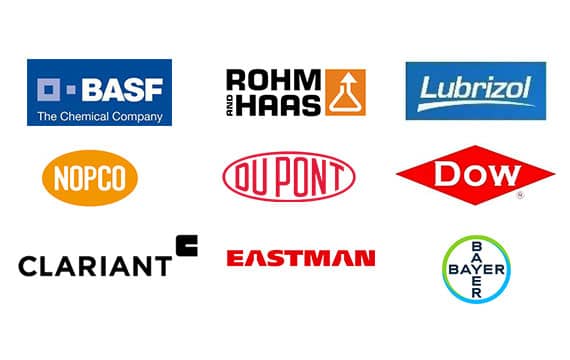
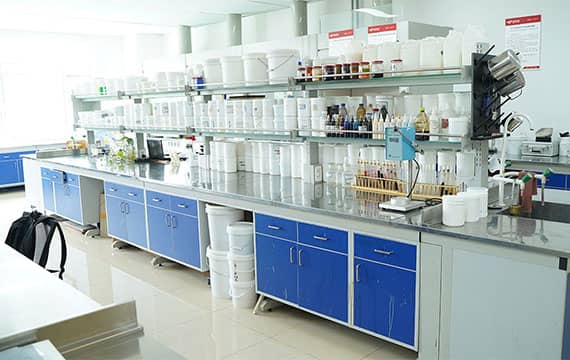

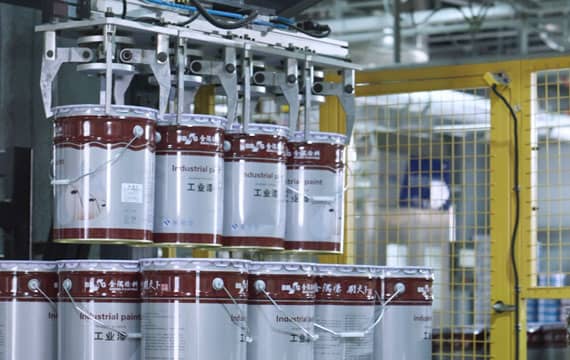
تفتخر JINYU® بمجموعة واسعة من خيارات الألوان وإمكانيات التخصيص. يعمل خبراء الألوان عن كثب مع العملاء لابتكار ظلال ولمسات نهائية فريدة تناسب مشاريعهم الخاصة.

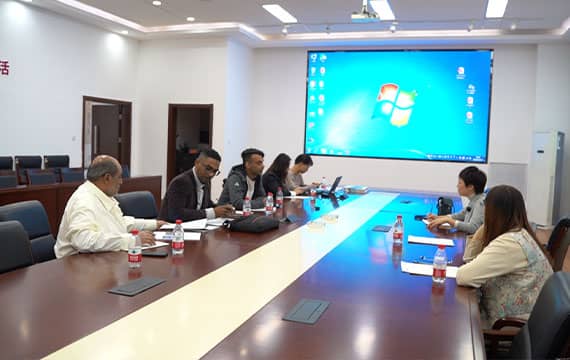
The Applications of Featured JINYU PAINT®
توفر جينيو للدهانات مجموعة شاملة من الدهانات عالية الأداء، بما في ذلك دهانات الأرضيات الإيبوكسي والدهانات الصناعية والدهانات المقاومة للحريق والدهانات المعمارية للجدران الداخلية والخارجية. صُممت حلولنا من أجل المتانة والجمال والحماية في مختلف التطبيقات، بدءاً من المباني السكنية والتجارية وحتى المنشآت الصناعية ومشاريع السلامة من الحرائق. سواءً كنت بحاجة إلى أرضيات غير ملحومة أو مقاومة للتآكل أو حماية من الحرائق أو تشطيبات جدران مزخرفة، فإن جينيـو للدهانات تقدم دهانات متخصصة لتعزيز وحماية كل سطح.










LATEST FAQS at JINYU PAINT®
الأسئلة الشائعة
- كيفية الوقاية من أضرار الصدمات الحرارية في أرضيات تجهيز الأغذية: حل خرسانة اليوريثان الخرسانية
- 7 استراتيجيات خبراء لإطالة العمر الافتراضي لأرضيات البولي يوريثين في المناطق ذات الازدحام الشديد
- كيفية إصلاح أرضيات البولي يوريثين المتقشرة أو المتشققة: دليل الإصلاح النهائي
- ما هي أفضل الممارسات لتركيب أرضيات البولي يوريثان في غرف تنظيف المستحضرات الصيدلانية؟
- ما نوع الأرضيات الأنسب لمخازن الخدمات اللوجستية ذات حركة مرور الرافعات الشوكية؟
اتصل بنا
الاتصال بـ السيدة سابيلا وي
الهاتف: 86-022-022-83859963
واتساب 15822925523
